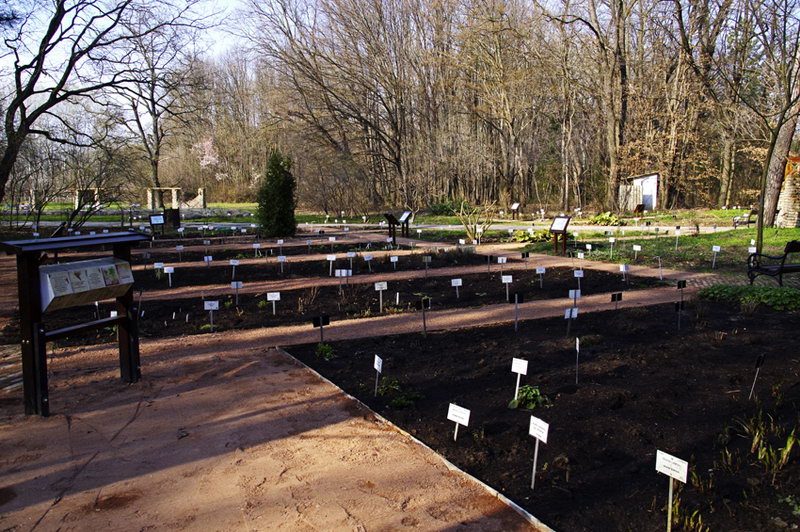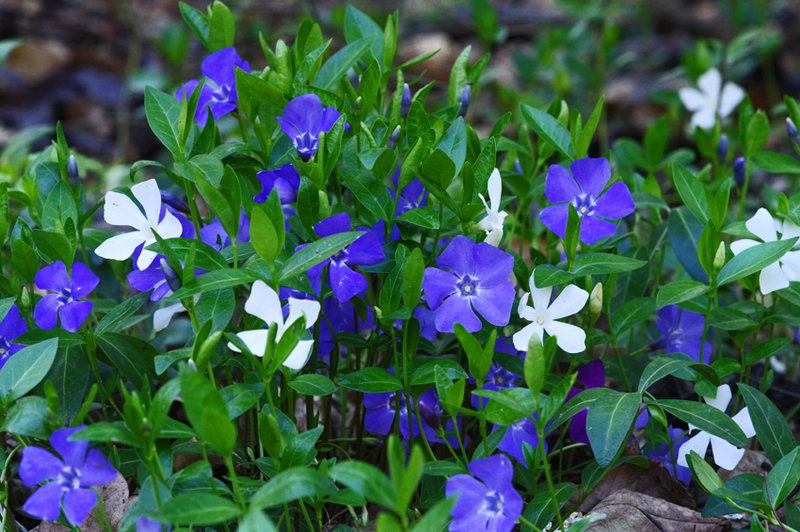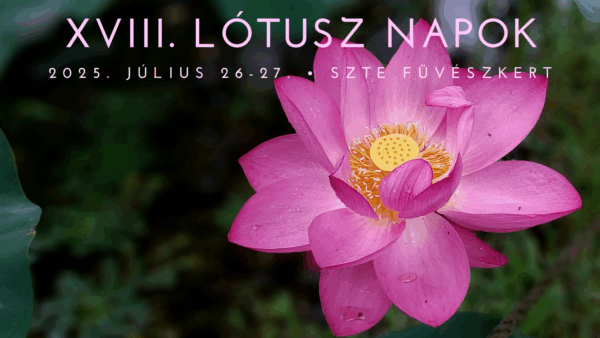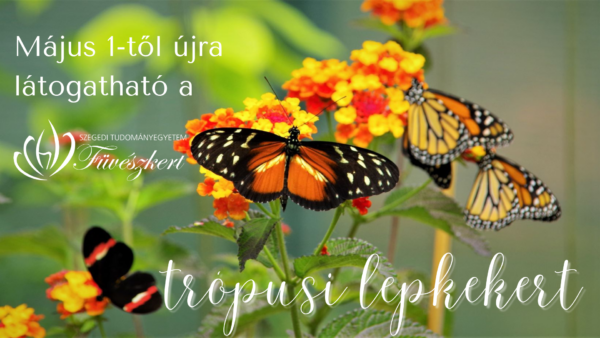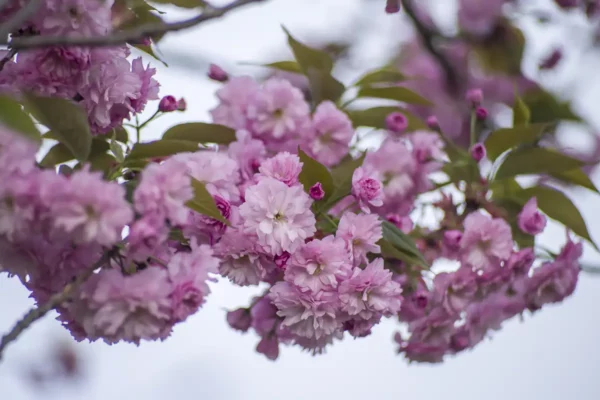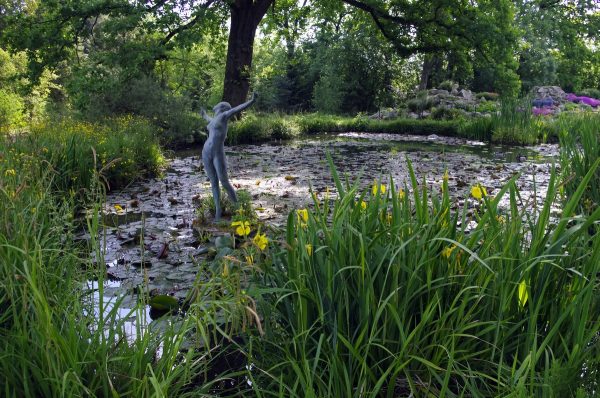In the meantime, in order to get to know some medicinal plants - even if only virtually - we took a look at some of our plants blooming in early spring.
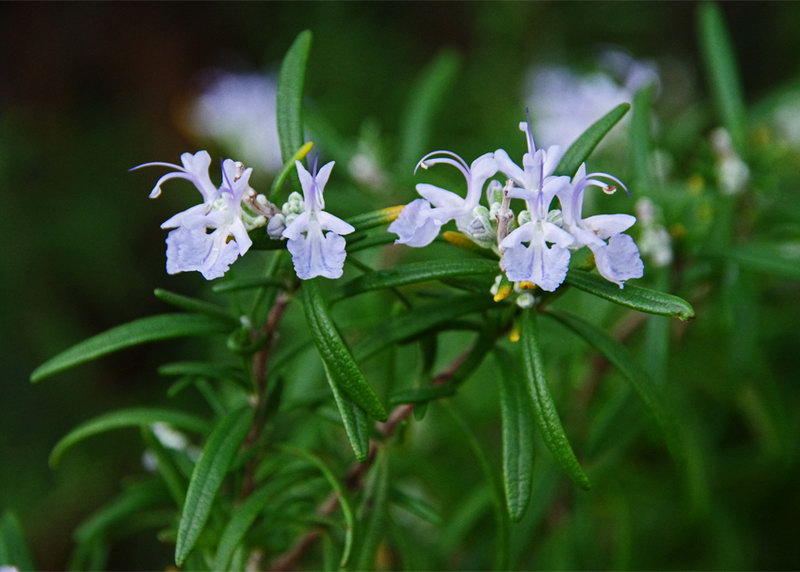 Rosemary (Rosmarinus officinalis L.)
Rosemary (Rosmarinus officinalis L.)
It is native to the Mediterranean Sea, the Ajakos (Lamiaceae) a perennial evergreen semi-shrub belonging to the family, drought-tolerant and warm-demanding species. In Hungary, due to its sensitivity to frost, it can only overwinter in sheltered, warm places, so it is brought into the Mediterranean greenhouse in winter, and there it produces its spicy-smelling, bluish-purple flowers as early as the end of February. Outdoors, it starts blooming later, usually from April.
Although it was a well-known and popular spice and aromatic plant in Europe for a long time, the alcoholic extract of rosemary was one of the raw materials of the popular medicinal product known as Aqua Reginae Hungariae (Aqua Reginae Hungariae) in the 17th century. This remedy has been successfully used throughout Europe for hundreds of years to relieve pain in the musculoskeletal system, and according to legend, it was prepared based on the recipe of Queen Elizabeth of Hungary.
Its use is very diverse, it is one of the basic spices of the Mediterranean cuisine, it is even used as a preservative due to its antioxidant content. Its essential oil, in addition to its medicinal use, has also become the raw material of many cosmetic products.
Its active ingredients are mostly found in its leaves, the dried leaves are used as a component of medicinal teas or essential oil is evaporated from the flowering stem above the ground.
In medicine, it is used internally as a tea for indigestion and liver-bile function enhancement, and externally, creams containing rosemary essential oil are recommended for joint, rheumatic and peripheral circulation disorders.
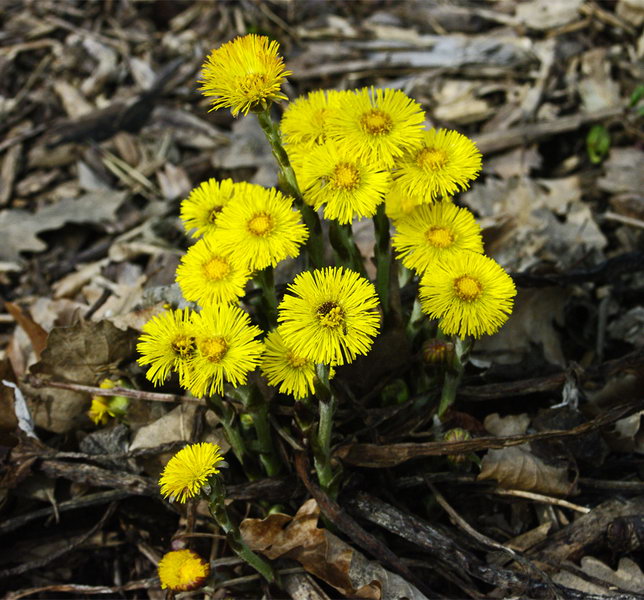 Coltsfoot (Tussilago farfara L.)
Coltsfoot (Tussilago farfara L.)
It is one of the first flowering plants in our herb garden. It is interesting that in early spring (February-March) the bright yellow inflorescences appear first and only several weeks later do the round, bay and toothed ones, whitish at the bottom, develop. A species with a Eurasian distribution, the nest-flowered ones (Asteraceae) a perennial plant belonging to the family, with a creeping, cylindrical rootstock. A common pioneer plant in our country, it tolerates disturbance well, it likes fresh, slightly calcareous growing places, but it occurs on sediments of rivers, on clayey soils, and in disturbed places.
Its active ingredients are mainly found in the leaves and flowers. It contains mucilaginous substances, so the tea made from its leaves can be used to coat the mucous membrane for dry coughs and to eliminate coughing stimuli. Since, in addition to mucilage, it also contains very small amounts of liver-damaging pyrrolizidine alkaloids - which are not extracted during the preparation of the decoction - it is not recommended to drink the tea for a long time as a precaution, it is contraindicated in patients with liver inflammation (hepatitis) or liver failure.
Spring primrose (Primula veris L.) and stemless primrose (Primula vulgaris L.)
The two primrose species, which the visitor can meet not only in the herb garden, but also in several parts of the Herb Garden, open their petals in early spring, in March-April. Both species are medicinal plants at the same time, their active ingredients and uses are similar. Plants of the temperate, mountainous, mesophilic deciduous forests and shrubs of Eurasia, the primroses (Primulae) they belong to your family. Perennial, herbaceous, calcareous soil-loving plants, oblique, dark brown, about their roots they originate their roots. They form a rosette of primrose leaves, are long ovoid, their surface is wrinkled, their backs are hairy, and they have lacy edges.
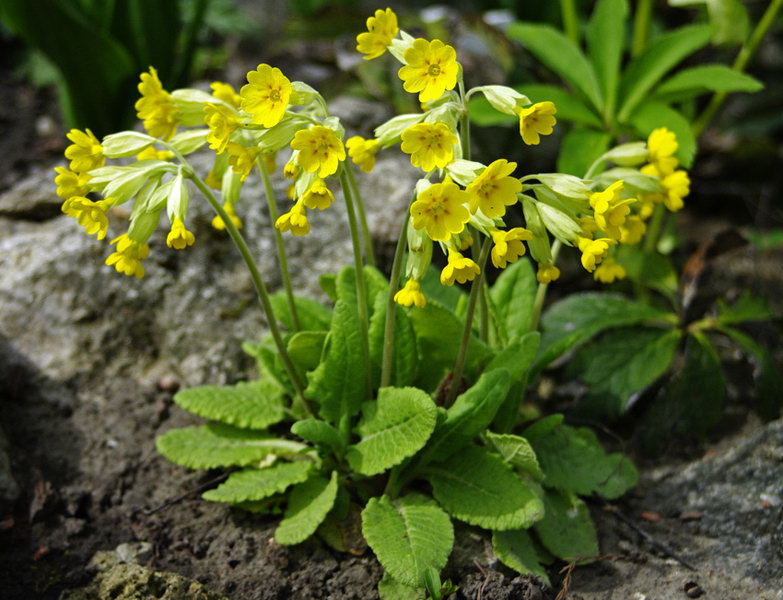 THE spring primrose its yellow, flattering flowers form an umbrella inflorescence at the top of a 15-25 cm leafless peduncle. Their calyx is slightly inflated, boiled, five-toothed, yellowish green. The party is also boiled, five-lobed, and there are five orange spots in the throat of the party. It also has five stamens attached to the party tube. It is the most common in the Northern Central Mountains.
THE spring primrose its yellow, flattering flowers form an umbrella inflorescence at the top of a 15-25 cm leafless peduncle. Their calyx is slightly inflated, boiled, five-toothed, yellowish green. The party is also boiled, five-lobed, and there are five orange spots in the throat of the party. It also has five stamens attached to the party tube. It is the most common in the Northern Central Mountains.
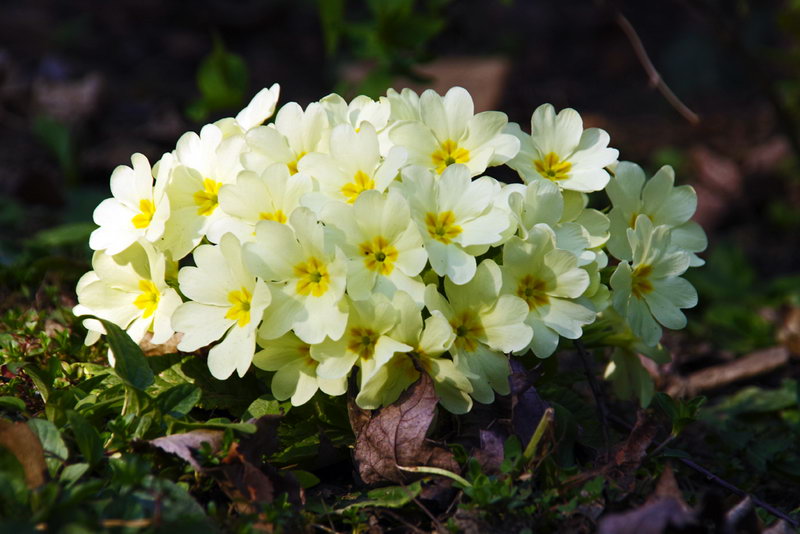 THE stemless primrose its also yellow flowers do not form umbel inflorescences, but develop individually on the stem. The most common in Transdanubia, it can also be found in Mecsek and Somogy. It is protected in Hungary and has an ideal value of HUF 5,000, but there are also cultivable versions.
THE stemless primrose its also yellow flowers do not form umbel inflorescences, but develop individually on the stem. The most common in Transdanubia, it can also be found in Mecsek and Somogy. It is protected in Hungary and has an ideal value of HUF 5,000, but there are also cultivable versions.
From a medicinal point of view, their most important active ingredients are saponins (primula acid complex), which are contained in all parts of the plant, but in the largest quantity in the rhizome.
The rooted rhizome is used as a decoction (in a baking soda medium) as an expectorant in tracheitis, and in bronchitis, and an alcoholic extract is also made from it. It can also be used in case of asthmatic, spasmodic cough, especially in combination with other herbs.
It tickled lungwort (Pulmonaria officinalis L. )
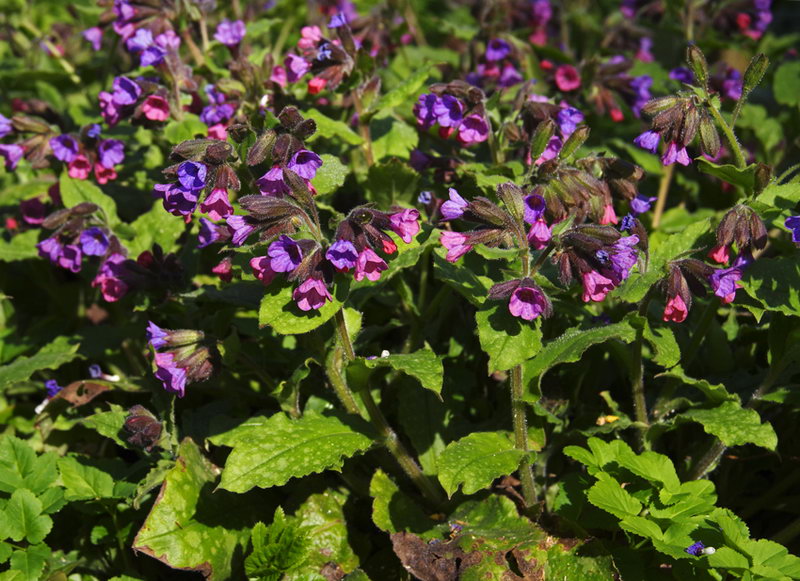 This showy plant with bluish-burgundy flowers, which can also be found in the herb garden, begins to bloom in March in the undergrowth of several forest patches in the Botanical Garden. In folk medicine, it was used as an expectorant and cough suppressant, but the results of the latest research do not show any medicinal effect, so nowadays it is no longer considered a medicinal plant. A species distributed in Central Europe, common in the Northern Central Mountains and Transdanubia in Hungary, rarer in the Great Plains, it occurs mainly in the undergrowth and forest edges of pine and beech forests. The rough-leaved ones (Boraginaceae) belongs to his family.
This showy plant with bluish-burgundy flowers, which can also be found in the herb garden, begins to bloom in March in the undergrowth of several forest patches in the Botanical Garden. In folk medicine, it was used as an expectorant and cough suppressant, but the results of the latest research do not show any medicinal effect, so nowadays it is no longer considered a medicinal plant. A species distributed in Central Europe, common in the Northern Central Mountains and Transdanubia in Hungary, rarer in the Great Plains, it occurs mainly in the undergrowth and forest edges of pine and beech forests. The rough-leaved ones (Boraginaceae) belongs to his family.
A perennial plant with a brown rhizome, of which in early spring, before mine
the 15-30 cm tall flowering and leafy stem develops. Its flowers are red as buds, purple when they open, and then gradually turn blue. Summer leaves develop after flowering, they can be ovate and have light spots, which is how the plant got its name.
The leaves, or rarely the flowering part above the ground, contain antioxidant phenolic acid derivatives (e.g. rosmarinic acid, caffeic acid), lignans and flavonoids.
Starting in the 16th century, it was believed that the spotted leaves of the plant were similar to the lungs, so they began to use it to treat lung and respiratory diseases based on the principle of "healing like with like". However, a new 2019 pharmacology study found that the plant's extract has no antibacterial activity and is not safe to use, especially for pneumonia.
Winter green tree (Vinca minor L.)
This perennial evergreen half-shrub with creeping stems blooms from April to May, a shade-loving plant of semi-arid temperate oaks and groves. This semi-shrub with decorative blue flowers is not only a popular ornamental plant for small gardens, but also a medicinal plant.
The woodpeckers (Apocynaceae) belongs to his family. Creeping, tendril-like vines on the soil surface. The stem takes root from the knots of the interstices and forms new upright plants and bushes. Its leaves are leathery, shiny, cross-opposite, broad lanceolate. Its violet-blue flowers are formed on upright shoots in the axils of the leaves.
The above-ground parts of the plant, mainly the leaves, contain more than 30 types of alkaloids. Among them, vincamine, isovincamine and vincine are the most important medicinally.
Its leaves were mainly used in folk medicine in "blood-purifying" and diuretic tea mixtures, as well as for healing wounds. From the alkaloids of modern medicine, he prepares blood pressure-lowering and brain-expanding drugs (e.g. Devincan). Vincamine is the basic ingredient of Cavinton, the well-known Hungarian drug that improves cerebral circulation.
Literature:
- Csupor D. and Szendrei K. ed. (2012): Medicinal plant library - a guide to modern medicinal use. Medicina Könyvkiadó Zrt., Budapest
- Bernáth J. et al. (2000): Medicinal and aromatic plants. Mezőgazda Publishing House, Budapest
- Rácz G., Rácz-Kotilla E., Gy. Szabó L. (1992): Medicinal plant knowledge - the basics of phytotherapy. SANITAS Natural Medicine Foundation, Budapest
- http://www.gyogynovenylap.hu/tudogyulladasra-tudofu/

